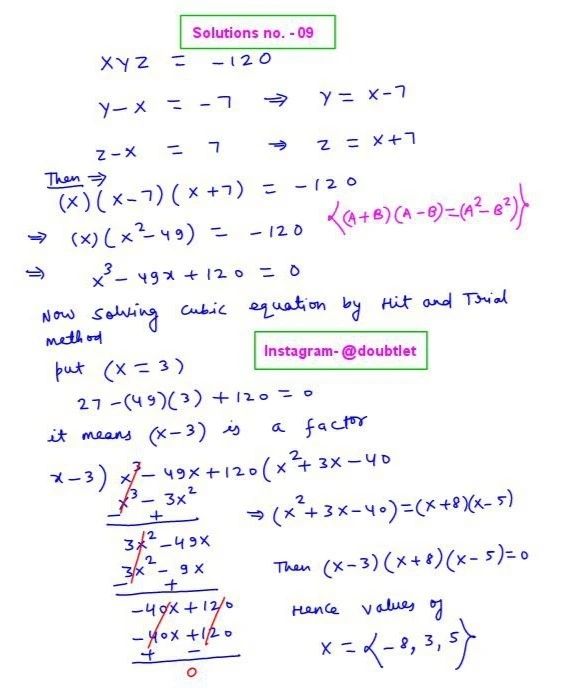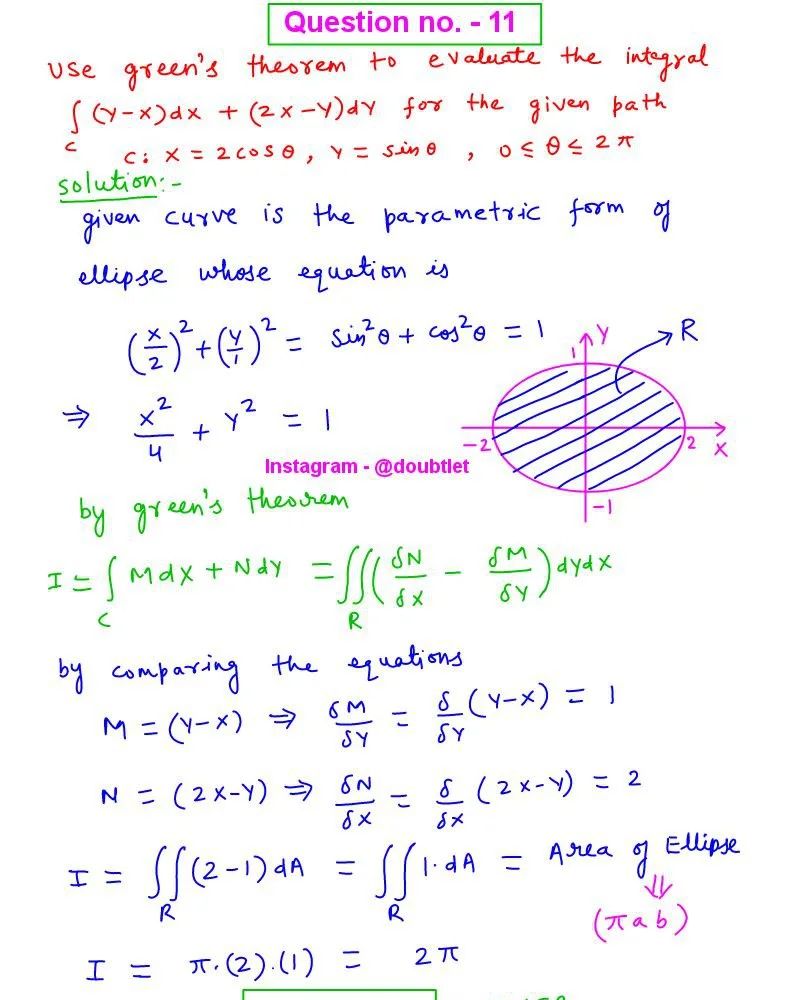









Parabola Formula Sheet
This page will help you to revise formulas and concepts of Parabola instantly for various exams.- Home
- Formula-Sheet
- Parabola
A parabola is a U-shaped curve that is the graph of a quadratic function. It is defined as the set of all points in a plane that are equidistant from a fixed point (the focus) and a fixed line (the directrix).
Neetesh Kumar | June 25, 2024
Share this Page on:
![]()
![]()
![]()
![]()
![]()
- 1. Conic Sections
- 2. General Equation of a Conic
- 3. Distinguishing Between the Conic
- 4. Parabola
- 5. Parametric Representation
- 6. Type of Parabola
- 7. Position of a Point Relative to a Parabola
- 8. Chord Joining Two Points
- 9. Line & A Parabola
- 10. Length of Subtangent & Subnormal
- 11. Tangent to the Parabola
- 12. Normal to the Parabola
- 13. Pair of Tangents
- 14. Chord of Contact
- 15. Chord with a Given Middle Point
- 16. Diameter
- 17. Co-normal Points
- 18. Important Highlights
1. Conic Sections
A conic section, or conic, is the locus of a point that moves in a plane so that its distance from a fixed point is in a constant ratio to its perpendicular distance from a fixed straight line.
- The fixed point is called the FOCUS.
- The fixed straight line is called the DIRECTRIX.
- The constant ratio is called the ECCENTRICITY denoted by .
- The line passing through the focus & perpendicular to the directrix is called the AXIS.
- A point of intersection of a conic with its axis is called a VERTEX.
2. General Equation of a Conic: Focal Directrix Property
The general equation of a conic with focus & directrix is:
3. Distinguishing Between the Conic
The nature of the conic section depends upon the position of the focus w.r.t. the directrix & also upon the value of the eccentricity . Two different cases arise.
Case (i) When the focus lies on the directrix:
In this case, & the general equation of a conic represents a pair of straight lines and if:
- , the lines will be real & distinct intersecting at .
- , the lines will coincident.
- , the lines will be imaginary.
Case (ii) When the focus does not lie on the directrix:
The conic represents:
- a parabola: or
- an ellipse: or
- a hyperbola: or
- a rectangular hyperbola: or
4. Parabola
A parabola is the locus of a point that moves in a plane, such that its distance from a fixed point (focus) is equal to its perpendicular distance from a fixed straight line (directrix). The standard equation of a parabola is . For this parabola:
- Vertex is
- Focus is
- Axis is
- Directrix is
Properties:
- Focal Distance: The distance of a point on the parabola from the focus.
- Focal Chord: A chord of the parabola which passes through the focus.
- Double Ordinate: A chord of the parabola perpendicular to the axis of the symmetry.
- Latus Rectum: A focal chord perpendicular to the axis of the parabola.
- Length of the latus rectum:
- Ends of the latus rectum: &
- Perpendicular distance from focus on directrix = half the latus rectum.
- Vertex is the middle point of the focus & the point of intersection of the directrix & axis.
- Two parabolas are said to be equal if they have a latus rectum of the same length.
5. Parametric Representation
The simplest form of representing the coordinates of a point on the parabola is . The equations & together represent the parabola , being the parameter.
6. Type of Parabola
Four standard forms of the parabola:
7. Position of a Point Relative to a Parabola
The point lies outside, on, or inside the parabola according to the expression being positive, zero, or negative.
8. Chord Joining Two Points
The equation of a chord of the parabola joining its two points and is .
- If is a focal chord then .
- Extremities of focal chord can be taken as &
- If then chord always passes a fixed point (–ka, 0).
9. Line & A Parabola
Tangency Condition:
The line meets the parabola in two points real, coincident, or imaginary according to:
Condition of tangency:
Length of Chord
Length of the chord intercepted by the parabola on the line y = mx + c is :
- The length of the focal chord, which makes an angle a with the x-axis, is 4a.Cosec.
10. Length of Subtangent & Subnormal
Let be the point on the parabola .
- Length of subtangent: Twice the abscissa of the point .
- Length of subnormal: Constant for all points on the parabola & equal to its semi-latus rectum .
11. Tangent to the Parabola
Point Form:
Equation of tangent at :
Slope Form:
Equation of tangent with slope : , (m 0) Point of contact:
Parametric form:
The equation of tangent to the given parabola at its point P(t) is - ty = x + at
- Point of intersection of the tangents at the point & is []. (i.e. G.M. and A.M. of abscissae and ordinates of the points)
12. Normal to the Parabola
Point Form:
Equation of normal at :
Slope Form:
Equation of normal with slope : Foot of the normal:
Parametric form:
The equation of normal to the given parabola at its point P(t) is y + tx = 2at + at
- Point of intersection of normals at & is
- If the normal to the parabola y = 4ax at the point , meets the parabola again at the point , then
13. Pair of Tangents
The equation of the pair of tangents from to the parabola is: Where:
14. Chord of Contact
Equation of the chord of contact from :
- Remember that the area of the triangle formed by the tangents from the point & the chord of contact is .
- Also, note that the chord of contact exists only if the point P is not inside.
15. Chord with a Given Middle Point
Equation of the chord of the parabola with middle point :
16. Diameter
The locus of the middle points of a system of parallel chords of a parabola is called a Diameter. Equation to the diameter of a parabola : Where = slope of parallel chords.
17. Co-normal Points
The foot of the normals of three concurrent normals are called Conormal Points. The algebraic sum of the slopes of three concurrent normals is zero.
- The sum of the ordinates of the three normal points is zero.
- The centroid of the triangle is formed by three co-normal points that lie on the axis.
- If , then three real and distinct normals can be drawn from point .
- If three normals are drawn from , then , one normal is the axis, and the other two are equally inclined to the axis.
18. Important Highlights
Tangent and Normal Properties:
- The tangent & normal at any point intersect the axis at & . , where is the focus.
- Tangent and normal at bisect the angle between the focal radius & the perpendicular from on the directrix.
- Rays from become parallel to the axis after reflection.
- Portion of a tangent cut off between the directrix & the curve subtends a right angle at the focus.
- Tangents at the extremities of a focal chord intersect at right angles on the directrix.
- A circle on any focal chord as diameter touches the directrix.
- Circle on any focal radii as diameter touches the tangent at the vertex and intercepts a chord of length on a normal at .
- Any tangent & the perpendicular from the focus meet on the tangent at the vertex.
- Semi latus rectum is the harmonic mean between segments of any focal chord:
- Image of the focus lies on the directrix with respect to any tangent.
Circle Formula Sheet
Ellipse Formula Sheet
Hyperbola Formula Sheet


